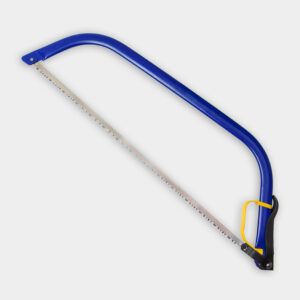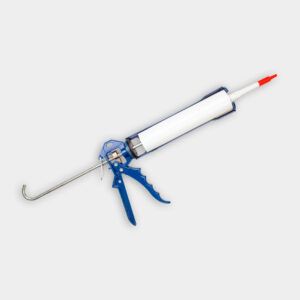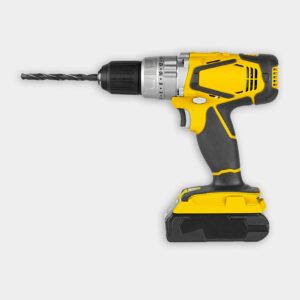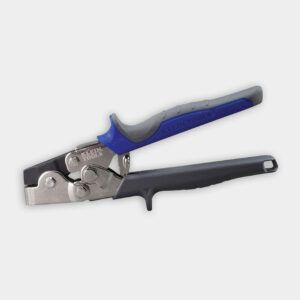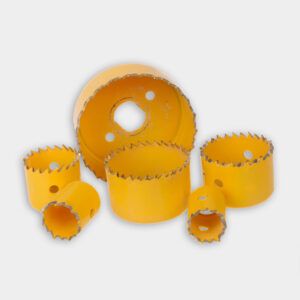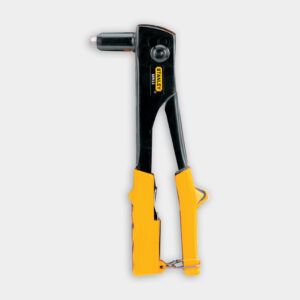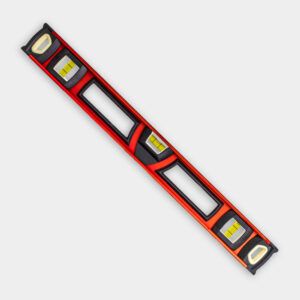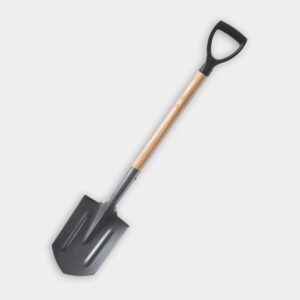We may be compensated if you purchase through links on our website. Our team is committed to delivering honest, objective, and independent reviews on home products and services.
Installing aluminum gutters requires careful planning and execution, but it is a manageable undertaking for most homeowners with basic tools and skills. In this video and guide, This Old House general contractor Tom Silva explains step-by-step how to install an aluminum gutter system properly.
Types of Aluminum Gutters
Aluminum gutters are a popular choice for homeowners due to their durability, affordability, and ease of installation. They are lightweight and rust-resistant and come in various styles and colors to complement your home’s exterior.
Aluminum gutters for residential use come in two main types: seamless and sectional. Seamless gutters are custom-made on-site to fit your home’s exact measurements, providing a tailored fit that minimizes leaks. Sectional gutters consist of premade sections joined together during installation, making them more accessible but potentially more prone to leaks at the seams.
Both options offer durable protection, but choosing between them often depends on your specific needs and budget. In this guide, we’ll focus on sectional aluminum gutters. Seamless gutters are better left to professionals.
Either one you choose, aluminum gutters offer several advantages:
- Rust-resistant: Aluminum gutters do not rust, even after prolonged exposure to rain, making them durable and functional even in harsh weather conditions.
- Lightweight and easy to handle: Aluminum’s lightweight nature makes installation less strenuous and more manageable, reducing the likelihood of damage during the process. This also means that the gutters put less stress on your home’s structure.
- Available in various colors and styles: Aluminum gutters come in a wide range of colors and styles, allowing you to choose a design that perfectly matches your home’s exterior. This customization enhances curb appeal while maintaining functionality.
- Cost-effective: Aluminum gutters are typically cheaper than other gutter materials like copper, making them a budget-friendly option for homeowners. Despite the lower cost, they still offer excellent performance and longevity.
- Long-lasting: With proper maintenance, aluminum gutters can last for many years, providing reliable protection for your home. Their durability makes them a smart investment for homeowners looking for long-term value.
Preparing for Aluminum Gutter Installation
Before starting the installation of your aluminum gutters, make sure to gather all the necessary materials and plan your gutter design. The most important factor is knowing how many gutter sections to order.
Measure along the house fascia to determine the length of each piece of gutter. When planning your installation, remember to account for corners and downspout locations.
When choosing the right gutter size, consider your home’s design and local climate conditions. A steeper roof slope will channel more water into the gutters, potentially overwhelming undersized systems. For regions with heavy rainfall, oversized gutters might be necessary to handle the increased volume.
You should also assess your downspouts’ capacity, verifying they can keep up with the flow without causing overflow issues. Proper sizing isn’t just about preventing overflow; it also helps avoid unnecessary wear and tear on your gutter system.
To install aluminum gutters, you will need the following tools:
How To Assemble Your Aluminum Gutters
Follow these steps to build your aluminum gutters:
- Apply a bead of silicone sealant along the inner edge of an aluminum end cap. Tap the end cap onto the end of the gutter, then secure it with a crimping tool.
- Cut the gutter to length using a hacksaw and tin snips.
- Fasten the pre-mitered aluminum corner to the gutter end using sealant and aluminum pop rivets.
- Attach an end cap to the second length of the gutter, then rivet it to the mitered corner to create the L-shaped gutter assembly.
- Use a hole saw to drill a 3-inch-diameter hole through the bottom of the gutter. Attach an outlet fitting to the hole using sealant and rivets.
Create Proper Slope for Drainage
Establishing the correct slope is essential for effective water drainage. A pitch of about 1/4 inch per 10 feet of gutter length is recommended to facilitate proper water flow and prevent standing water, which can lead to clogs and damage.
Use these steps to find the right pitch as you install your gutter:
- Hold the L-shaped gutter assembly in place against the house fascia.
- Position the high end of the gutter using a level as a straightedge. The front edge of the gutter should not protrude above the roof plane.
- Slip a gutter hanger into the high-end of the gutter, then drive a screw through the hanger and fascia and into a rafter tail.
- Adjust the gutter’s pitch so that rainwater will drain down to where the downspout will be installed.
- Slip hangers into the gutter and drive the screws through the brackets and into the rafter tails. Place one bracket at each rafter tail.
Tip: Placing gutter hangers every 24 to 36 inches provides optimal support and prevents the gutters from sagging or becoming misaligned.
Aluminum Downspout Installation
Downspouts help direct water away from your home’s foundation, preventing potential water damage. Once the gutters are installed, here’s how to connect your downspout:
- Place two elbows on the upper end of a length of downspout, and secure them with short sheet-metal screws.
- Screw two aluminum wall brackets to the house corner boards.
- Slip the elbow on the upper end of the downspout over the outlet fitting protruding from the gutter above.
- To hold the downspout in place, drive short sheet-metal screws through the wall brackets and into the downspout.
- Dig a shallow trench from the lower end of the downspout away from the house.
- Use PVC primer and cement to assemble a rainwater drainpipe from a 4-inch-diameter PVC pipe and assorted fittings.
- Attach an elbow and rectangular downspout fitting on one end of the drainpipe. On the other end, glue on an elbow and drainage cap.
- Slip the bottom end of the downspout into the rectangular downspout fitting attached to the end of the PVC drainpipe.
- Lay the drainpipe in the trench, then backfill.
To prevent water from pooling near your home’s foundation, consider these options:
- Connect the downspout to an underground drainage system to create a more permanent solution for directing water away from the house.
- Install a splash block at the base of the downspout to help disperse the water and prevent erosion.
- Use a flexible extension as a temporary or adjustable solution to manage water flow.
Aluminum Gutter Maintenance and Care
Follow these maintenance tips to keep your aluminum gutters functioning properly.
- Clean gutters at least twice yearly to remove leaves, twigs, and other debris. This can prevent clogs and water overflow.
- Use a water hose to flush out any blockages that impede water flow.
- Check for loose hangers, leaks, or signs of corrosion that could compromise the gutter system.
- Adjust hangers if gutters become misaligned or start to sag.
- Repair small holes or cracks with gutter sealant to prevent leaks.
- Replace damaged sections promptly to avoid more significant problems.
Additional Aluminum Considerations
Several other factors, including gutter guards and professional installation options, can enhance the performance and longevity of your system. We’ll explore those options below.
Gutter Guards and Covers
Installing gutter guards or covers helps prevent debris from entering the gutter, reducing the need for frequent cleanings. These protective devices are especially advantageous in wooded areas, where falling leaves and twigs can quickly clog a gutter system.
When choosing a guard or cover, consider the common debris type in your area. Fine mesh guards work well against pine needles, while solid covers are better for larger leaves. Some guards even have a slight curve to encourage debris to fall off the roof rather than into the gutter. Installing these can extend the lifespan of your gutters by preventing rust and sagging caused by accumulated debris.
Professional Installation Services
Opting for professional gutter installation services can save you time and potential headaches, especially if your home has complex rooflines or multiple stories. Professionals have the know-how to customize gutter systems to your home’s specific needs, guaranteeing proper slope and secure attachment.
They also bring specialized tools that can handle tricky installations, such as seamless gutters cut on-site to the exact length of your roofline, reducing the risk of leaks. Additionally, a professional installation often comes with a warranty, providing peace of mind that your investment is protected against future issues.
